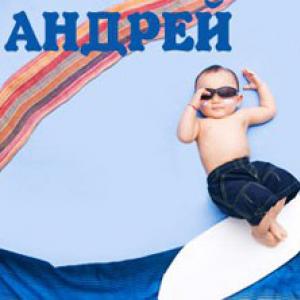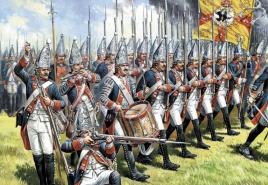The largest roosters are domestic. The largest breeds of roosters. Personal records of individual representatives
For poultry farmers and other meat eaters, chicken is a compact bird. But few people know that there are real giant chickens, which will be discussed further.
Chickens of the egg breed are not very large. Large specimens are only a meat and egg breed, characterized by average egg production and good meat productivity.
Giants in the world of chickens are calculated according to several criteria, the most important of which are:
- height.
All large birds have several features in common - stockiness, powerful legs and loose plumage. So, what are the largest chicken breeds? Let's present their names, photos and descriptions in table form.
| Breed name | Photo | Description |
| Brahma | This breed is considered a meat-egg breed. She was taken out to North America in the 19th century. The birds have lush plumage and beautiful “pants” on their legs. The colors of their plumage are often light, dark or partridge. White Brahma are very common. Representatives of the breed not only look impressive, but also boast good productivity indicators and a proud gait, as well as rapid growth young animals The weight reaches 3-4.5 kg, the weight of the rooster is 4-5 kg. A black rooster can weigh more - up to 6-7 kg. Egg production – 100-120 eggs per year. Partridge Brahma is the same mass as the light ones. | |
| Master Gray | This breed is in second place after Bram. Representatives of the meat and egg breed grow quickly, are very hardy, calm, almost never get sick and are easy to care for. This is a French breed that was selected for keeping on small poultry farms. The weight of a female bird is about 4 kg. A male representative can weigh up to 7 kg. The bird is only 45 days old and weighs 1.5 kg. Master Gray's egg production is 300 eggs per year. Poultry meat is lean, tasty and dietary. The color of the birds is gray and white. | |
| Jersey giant | This is very famous breed in the world. It was bred a long time ago by a farmer from America, Dexter Ukham. The name of the chickens comes from the state of New Jersey. First, birds were recognized in England, then in the Netherlands, Germany, and only then were brought to European countries. The color of the bird is white, black, blue. Jersey giants grow quickly, increase their meat mass, adapt well to any environment and are very calm. At 6 months, the weight of these chickens, or more precisely, the rooster, reaches 5 kg. A chicken at this age weighs 3.6-4.5 kg. | |
| Cochin | Cochins are somewhat similar to Brahm, but still different from them. The Brahma breed was developed from Cochin. Vietnamese chickens are large, wide, hardy, muscular and are not at all afraid of the cold. They were selected for early XIX century. In Russia, very few poultry farmers now grow them. Popular colors: blue, partridge. The weight of the rooster is 4.3-4.5 kg. Chicken weight – 4 kg. Egg production – 100-120 eggs per year. Cochins are prone to obesity; it is imperative to closely monitor their diet. | |
| Orpington | Another very popular chicken in the world is Orpington. They were bred in 1876 by poultry farmer and businessman William Cook. Birds are distinguished by their size and tasty dietary meat. They have a cubic body with abundant plumage and a variety of colors. The weight of a male individual reaches 4.5-5 kg. Although there are cases when the weight of an Orpington rooster was 7 kg. A female can weigh up to 3-3.5 kg. Egg production – 140-160 eggs per year. |
The most big birds meat breeds are very calm and balanced. Their character is phlegmatic.
In addition, they are very expensive and not very common among ordinary poultry keepers. Very often such birds can be seen at special exhibitions.
Book of chicken records
Yes, even among chickens there are real giants and record holders. We present to you the largest chickens in the world that have been recorded. The bad thing is that very few of them have been recorded. For most poultry farmers, registering a record is not entirely clear or necessary.
Rooster Corbun
Rooster Corbun is a huge Brahm rooster native to Somerset in the UK. Rooster's owner named his rooster, inspired by the movie True Grit, after its main character.
The entire Stone family is afraid of their giant Korbun. The bird's height is 91 cm and its weight is 11 kg. It is clear that Rooster Korbun will never be used as a delicious dinner. The rooster is so strong that he protects his own chicken coop from foxes and dogs.
Big Snow
This rooster is considered the official record holder, since it was recorded by special authorities in 1992.
Big Snow is the largest representative of the very rare breed Whitesulli chickens, whose maximum weight is 8-10 kg. Big Snow weighed 10.36 kg. The owner of the rooster is Ronald Alldridge from Deuchar (Queensled) in Australia.

Large breeds of chickens belong to the meat type. Among them there are real giants, such as Brahma or Orpington. They grow up to 70 cm at the withers and gain weight of more than 6 kg, but this is not the limit - record-breaking roosters, famous throughout the world, are even larger.
Review of large breeds of chickens with descriptions and photos
Large species of birds in terms of productivity belong to meat direction. They have several features - rapid growth, a tendency to obesity, late puberty. As a rule, large breeds are slow to fledge, so chicks need to be kept warm longer. The good news is that giant laying hens for the most part have a peaceful character and behave calmly.
Brahma
Brahma chickens were bred in the 18th century by American breeders based on the Malayan fighting, Chittagong and Koch breeds. The birds are famous not only for their gigantic size, but also for their luxurious feather cover.

The photo shows a Brahma rooster. At one year of age, its weight reaches 5–5.5 kg. The representative of this line looks impressive - the brow ridges are clearly visible on the broad-browed head, giving expressiveness to the look. The crest is poorly developed, the face is red, slightly pubescent, the earrings are delicate.
On powerful paws there is a massive body with a large wide chest and back. The long, strong neck is decorated with a thick mane. The metatarsus of the brahma is feathered. A bushy ponytail completes the look. middle length. The following colors are typical for the breed:
- light;
- dark;
- pale yellow;
- partridge-ribbon;
- partridge blue;
- Colombian yellow-black;
- white;
- blue;
- golden-edged.
Despite their large size and menacing appearance, Brahma chickens are fairly calm creatures. They quickly get used to a new place and owner and are stress-resistant. Puberty occurs at 9 months. Egg productivity is low - 120–140 eggs per year. Brahmas lay eggs infrequently, but consistently - egg laying does not stop in winter.
This is a hybrid created on the basis of a redbro cross by the world famous Hubbard company. Master Gray – large birds meat and egg type, ideal for growing on small home farms. Externally, the birds are unremarkable except for their large size. The weight of a one-year-old rooster reaches 6 kg, and that of a laying hen - 4 kg. Already at two months of age, the weight of a chicken carcass is 1.5–1.8 kg.
Attention! Master Gray chickens produce not only meat, but also eggs. Puberty in laying hens occurs early - at 4.5 months; in a year it is possible to collect 250 eggs from one individual.

Representatives of this breed have a massive body with a well-defined chest and a wide back. The body is supported by fleshy legs, and a short but bushy tail flaunts behind. The head is small with a red leaf-shaped crest crowning it. The face is red, the eyes are orange. The plumage is light gray with black splashes in the neck and tail.
Large master gray chickens are a godsend for home farm. They provide the owner with meat and egg products all year round, and do not require complex care. When it comes to feeding, birds are unpretentious - they eat everything, but they build muscle mass faster on industrial feed.
The breed was created about 100 years ago in the American state of New Jersey, which is why it received this name. The selection involved brahms, orpingtons, langshans, and meat chickens with dark feather color.
This is truly a huge bird - the live weight of a one-year-old rooster can reach 7 kg. Females are smaller - 4 kg. Representatives of this line are characterized by a broad-browed head with a straight red comb consisting of 6 teeth, a powerful neck, a massive body with a dense chest, a toned stomach and muscular legs.

The wings are small, a lush beautiful tail with long braids is located at an angle of 45 degrees relative to the line of the back. Types of colors of the Jersey giant are black, white, blue.
Advantages of the bird:
- friendly character;
- high meat productivity;
- ability to quickly adapt to different conditions content;
- unpretentiousness.
Cochin
One of the largest breeds of chickens from Vietnam, which is already more than 200 years old. The birds are similar in appearance to representatives of the Brahma breed, only Cochins have short legs, due to which they appear squat.
A Vietnamese rooster weighs 5 kg, and a female weighs 4 kg. The birds are well built - the body is completely covered with muscles, the neck is thick with a luxurious mane, the legs are densely feathered, the tail is raised high, and the ends of its long braids are lowered down. The variety of feather colors among Cochins is amazing - white, blue, black, fawn, partridge.

The productive qualities of a Vietnamese female are excellent - an adult rooster weighs 4.5 kg, and a laying hen a little less. Birds are prone to obesity, so they need walking. Kochs' egg production is low - 110–130 eggs.
The photo shows the Orpington breed - among large chickens, it stands out for its original appearance. The line was developed in England in the 18th century. Selection work was carried out for 30 years. The bird's body is knitted, so full that the head seems tiny, and the lush plumage gives the body additional volume.
A description of the breed will be incomplete without talking about the productivity of the bird. The weight of a rooster at the age of 9–10 months is 4.6–5 kg, the weight of a laying hen is 1 kg less. A chicken produces about 180 eggs per year. Young individuals whose weight has reached 2.5 kg are sent for slaughter. Orpington meat is tender, juicy, and moderately fatty.

The tallest chicken breeds
When considering large breeds of laying hens, it is worth mentioning the fighting varieties, as they are distinguished by their high growth. Today they are bred exclusively as ornamental birds or to improve the meat characteristics of poultry, but previously the birds were used in cockfighting.
General characteristics of fighting chickens:
- vertical position of the body;
- developed shoulder girdle;
- loose plumage;
- small comb;
- strong, strong beak;
- wide-set, muscular legs;
- predatory look.
Attention! Fighting chickens are characterized by aggression. They can even attack their owner.
Elephant chickens ga dong tao
Giant size Vietnamese chicken. In her homeland she is considered a national treasure. The rooster's height is 75–90 cm, weight is 6–7 kg. The peculiarity of the breed is its thick paws, covered with growths, reminiscent of the legs of an elephant. This part of the body of ga dong tao is disgusting to some, and in its homeland the limbs of the bird are considered a delicacy.
Attention! The girth of a rooster ga dong tao's leg is equal to the thickness of a child's wrist.

Elephant chickens cannot be confused with others - they have an original appearance:
- stocky figure, muscular body with small wings;
- on the small head there is a rose-shaped crest;
- the bird has a predatory, aggressive look, red eyes;
- limbs of medium length, thick metatarsals, bare with huge toes;
- sickle-shaped tail;
- the plumage is loose;
- types of colors - black, wheaten, fawn, black and red.
Reference. The cost of a purebred Ga Dong Tao rooster reaches $1,500. This is one of the reasons why representatives Vietnamese breed are not popular in Russia.
Malayan fighting
Another tall chicken of the Malayan fighting breed is worthy of attention. The bird's height reaches 90 cm. Its distinctive feature is line of three bends. Representatives of this line have an arched neck, back and tail. The body position is vertical. The shoulders and chest are well defined on the body.
The head is small with clearly defined brow ridges and a compact pisiform crest. The legs are long, the shins are well muscled, the metatarsals are strong, bare, yellow color. The most common color is black, but white, wheaten, porcelain and others are also found.

The Malay laying hen produces 100 eggs weighing 57 g over the course of a year. The shell is strong and light beige. The weight of the head of the family is close to 5 kg. Females are slightly smaller - 3.5–4 kg.
Huge record breaking chickens
Many chicken farm owners try to achieve certain goals when breeding laying hens and even compete with each other. Some poultry farmers go even further - they try to make history by raising the largest chicken. Among them are Jeremy Goldsmith and the Stone family from the UK, Ronald Alldridge from Australia.
Ten-kilogram Big Snow
A Whitesulli rooster named Big Snow, owned by Australian Ronald Alldridge, set a weight record in 1992. He gained more than 10 kg with a height of 43 cm. Having measured the chest circumference of the bird, the commission recorded the figure - 84 cm. The farmer loved his pet very much and was proud of him, but, unfortunately, he soon died.
Little John
A huge Brahma rooster, Little John, lives in England. At the age of one, his height reached 66 cm. The owner of the giant, farmer Jeremy Goldsmith, does not want to reveal the secret of what he feeds his feathered friend, but admits that accelerated growth promotes a special diet.
This rooster is also English and belongs to the Brahma chicken breed. The bird's owners, the Stone couple, describe him as the brave head of the family. According to them, Rooster is not even afraid of foxes, which often enter the farm. This is not surprising, the rooster is 91 cm tall and weighs 11 kg.

Large chickens need a lot of free space. When setting up a chicken coop, it is important not to overpopulate it with birds - 1-2 birds are planted per 1 m2. Perches must be strong to withstand the load. They are placed at a height of no more than 60 cm and equipped with ladders - large birds cannot take off due to their weight.
For giant chickens you will have to install several feeders. The length of the feed strip for representatives of meat and fighting breeds is 35 cm. A walking area will have to be built near the chicken coop. Its area is calculated based on the number of livestock - for 10 birds, 20 m2 of free space is enough.

The diet of birds consists of grain mixtures, vegetables and herbs. Kuram meat breeds You need a lot of protein to build muscle tissue. The feed is enriched with additives - chalk, crushed egg shells, bone meal, yeast. Twice a year the birds are given vitamins, for example Chiktonik.
So, Rooster Coburn is recognized as the largest rooster in the world; he is ahead of his rivals, Little John and Big Snow, in weight and height. Perhaps a worthy replacement for the main prize-winner is already growing up on the planet, then the media will report about it.
Collapse
Massive chickens are usually meat-type birds. This fact is due to the fact that the largest breeds of chickens have a large body, on which much more meat grows than on the body of laying hens, which affects their weight, this is clearly visible in the photo.
Representatives of the egg type, in turn, are characterized by fast metabolic processes and are also not predisposed to obesity, due to which their egg production is higher.
What are the largest chicken breeds?
Brahma
Chickens Brahma
The individual is a representative of the meat-egg direction; the chickens stand out for their beautiful and aesthetic appearance. At the same time, due to their remarkable performance, birds are quite in demand among poultry farmers. There is a variety of chickens quite similar in appearance to Brama, bred in Ukraine. We are talking about the Pervomayskaya breed.
Productive Features:
- maximum possible weight – 4.5 kg;
- number of eggs laid per year – 130 pcs.;
- The average egg weight is 65 g.
Master Gray

Breed of chickens "Master Gray"
Representatives of this breed are distinguished by large eggs.
Key productivity indicators:
- the mass of an individual reaches 4 kg;
- in the first year the chicken lays about 300 eggs;
- The average egg weight is 70-90 g.
Jersey giant

Photo of the Jersey giant
The Jersey Giant chicken breed is another representative of chickens that lay large eggs. The largest breed of chickens is distinguished by the unusually large dimensions of this individual. On average, the weight of birds reaches around 4.5 kg.
Characteristic appearance:
- the head is small;
- the neck is slightly elongated;
- massive build;
- voluminous convex breasts;
- the back is quite wide.
In 1 year, a laying hen can lay approximately 180 eggs. Their weight is 62 g. Jersey giants come in the following colors: pale blue, light and dark. You can learn more about the breed in the article ““.
Cochin

Large Cochin
The birds are characterized by a large and powerful body, as well as tall stature. The thick feather cover is white, blue or fawn.
Main external characteristics:
- convex, voluminous breasts;
- the back is quite wide;
- the wings have a rounded shape;
- strong neck;
- the head is not very large;
- small leaf-shaped comb;
- rather short tail.
The individual does not require any special growing conditions, but it has a rather aggressive disposition. Representatives of the breed gain up to 4 kg. In a year, a chicken can lay about 110 eggs, with an egg mass of 60 g. The best period for laying eggs for these chickens is winter. You can learn about the characteristics of the breed in detail in the article ““.
Orpington

Orpington
This is a representative of the meat-and-egg direction of chickens, the main advantage of which can be called high-quality meat.
Main productive indicators:
- the average weight of males is 4.5 kg;
- chickens reach 3.5 kg;
- a laying hen lays 160 eggs per year;
- average egg weight – 70 g;
- the shell is yellow.
Features of keeping and feeding large breed chickens
Breeding such giants is not a particularly difficult matter, but due to the large size of the individual, some nuances of maintenance should be taken into account.
- firstly, it is recommended to organize a spacious walk for the chickens;
- due to its heavy weight, the bird is not able to fly, which is why there is no need to install high fences;
- you should also arrange all nests and perches as low as possible, or install additional “ramps”;
- Laying hens often crush or throw out eggs, which is why strict control of the egg-laying process is required;
- the floor in the poultry house should be covered with soft flooring to prevent injuries to chickens if they fall;
- These birds are distinguished by good cold resistance, but at the same time they have a rather vulnerable crest.
It is necessary to approach feeding chickens very responsibly; you should not overfeed them, since these giants are prone to obesity, which entails a decrease in the level of fertility.
Records of individual chickens
Let's take a look at the most famous and remarkable records among giant chickens.
Rooster Rooster Coburn

Rooster Rooster Coburn
This giant lives in the UK in Somerset. A rooster of such impressive size is feared by its own owners. This giant weighs 11 kg and reaches 61 cm in height.
Big Snow

Big Snow - big snow
Officially recorded record among the most big cocks- a giant called Big Snow. This is a representative of a rather rare Whitesulli variety. The rooster comes from Queensland, Australia. The male in 1992 reached a weight of 10.36 kg
Little John

The tallest rooster in the world is "Little John"
Is the tallest rooster in the world. At the withers, the bird's height is 66 cm, and its appearance can scare small children.
Bottom line
The largest meat-type chickens are quite peaceful and calm. They have a phlegmatic character. Besides, this breed is quite an expensive pleasure, which is why it is not very popular among standard breeders, although reviews about it are good. It is often possible to meet representatives of these breeds at highly specialized exhibitions.
←Previous article Next article →Chicken is the most famous Domestic bird. Over several centuries of selection, a considerable number of varieties of domestic chickens have been bred for various purposes: for meat and eggs, universal and even decorative. For single breeding, they mainly focus on universal breeds with average weight and egg production. But if chicken is bred for meat, then it is better to choose giant breeds. And which are the largest ones - we will tell you further.
What are the largest chicken breeds?
Let's say right away: giant breeds mainly include meat chickens. They are characterized by the following indicators:
- squatness;
- strong, strong, small legs;
- horizontal position;
- loose plumage.
Meat chickens make first-class hens; they are distinguished by their calm, sedate character.
Important! The egg production of large breeds is average, so you should not expect miracles from these breeds.
Brahma
Although this breed belongs to the meat-egg type, its decent size made it possible to describe it in this article.  What it looks like. These chickens are quite attractive. They have luxurious, pretty plumage and charming “pants” on their legs.
What it looks like. These chickens are quite attractive. They have luxurious, pretty plumage and charming “pants” on their legs.
Skeleton - large, wide, located on long legs. It accumulates quickly muscle mass. The chest and back are large. The wings are quite powerful.  These chickens have a proud (sometimes too proud) posture and gait. Roosters have a pod-shaped comb without obvious serrations. The lobes of representatives of the brahma are long, the beak is strong and large.
These chickens have a proud (sometimes too proud) posture and gait. Roosters have a pod-shaped comb without obvious serrations. The lobes of representatives of the brahma are long, the beak is strong and large.  There are Brahma chickens dark color, light or partridge-colored. Birds with light plumage have become widespread in Europe since the 50s of the last century. Mainly, interest was caused by such indicators as effective quality and original appearance. The light type has white feathers with dark inclusions on the neck and tail.
There are Brahma chickens dark color, light or partridge-colored. Birds with light plumage have become widespread in Europe since the 50s of the last century. Mainly, interest was caused by such indicators as effective quality and original appearance. The light type has white feathers with dark inclusions on the neck and tail.
Birds with dark plumage are similar to light ones, but their color is contrasting: on the main dark plane there are light streaks on the back and neck.  The partridge (“wild” color, brown) version resembles its white and dark “brothers” in appearance, but differs in color - brown specks on a cream background.
The partridge (“wild” color, brown) version resembles its white and dark “brothers” in appearance, but differs in color - brown specks on a cream background.
- Character. In addition to excellent productive indicators, the gate is the pearl of the poultry house. They have an easy-going disposition and get along easily with other breeds.
- Mass of rooster and chicken. Light roosters weigh no less than 4-5 kg, dark ones - 6-7 kg, brown ones - 3-4 kg. The productive weight of white and dark chicken is 3-4.5 kg, brown - 3.5-4.5 kg.
- Egg production. 100-120 eggs weighing 65 g per year.
Important! Chickens of this breed do not stop laying eggs even in the autumn-winter season.
The largest and at the same time the youngest variety. Its homeland is the state of New Jersey, where at the beginning of the 20th century, due to the hybridization of several species, the Jersey giant was bred. After this, work was carried out to improve the breed to develop different plumage options. This is how the white and light blue Jerseys arose.  What it looks like. These beauties look spectacular. A small head is proudly located on a powerful neck. The body is solid, horizontal, located on low, strong legs.
What it looks like. These beauties look spectacular. A small head is proudly located on a powerful neck. The body is solid, horizontal, located on low, strong legs.
The back is muscular, the chest is fleshy and convex. These two parameters are specific to the breed.
 Roosters have a small, short, leaf-shaped crest and a bushy, sickle-shaped tail.
Roosters have a small, short, leaf-shaped crest and a bushy, sickle-shaped tail.
Character. They freely adapt to any conditions and can easily withstand cold weather. By nature - flexible, balanced, with a persistent instinct to hatch.
Mass of rooster and chicken. The bird fully justifies the title of heavyweight and is characterized by its growth rate and amazing dimensions in adulthood. Already one-year-old males weigh 4-5 kg, and in next year increase another 1 kg.  The chickens are also not small - 4-4.5 kg.
The chickens are also not small - 4-4.5 kg.
Egg production. Satisfactory. In a year, a chicken can produce about 180 eggs with an average weight of up to 60 g.
One of the oldest varieties, known back in the 18th century. The homeland is considered to be Cochin China, the Mekong River Valley (Vietnam). These chickens quickly fell in love with English poultry farmers, and as a result, birds of various colors were obtained: partridge, white, black, fawn, blue.  Before the revolution, Cochins were actively bred in Russia, but today their population has declined due to high cost breeding specimens.
Before the revolution, Cochins were actively bred in Russia, but today their population has declined due to high cost breeding specimens.
What it looks like. Representatives of this breed are large, tall, massive, with a wide chest and back. The plumage is lush and bright. A characteristic feature of the bird is powerful, strong, short, feathered legs and a voluminous curly tail. The wings are short and rounded. The neck is small and stocky.  The head is small, crowned with a leaf-shaped crest.
The head is small, crowned with a leaf-shaped crest.
The breed is quite hardy, adapts well to the northern climate and tolerates long winters well. 
- Character. Cochins are slightly aggressive and a little more withdrawn than other large species.
- Mass of rooster and chicken. The live weight of a rooster is 4.5-5 kg, of a female - 3.5-4 kg.
- Egg production. 110-120 eggs per year weighing 55-60 g.
Master Gray
The variety was obtained in France and is classified as meat and egg.
What it looks like. The name of the cross arose because of the appearance of the bird: black and gray patches are scattered on the white feathers, and a black necklace can be seen around the neck.  The chest is muscular and developed. The body is horizontal, powerful, square in shape. Legs are massive and strong.
The chest is muscular and developed. The body is horizontal, powerful, square in shape. Legs are massive and strong.
The viability of young animals is 98-100%, they quickly gain weight. The meat is dense but tender.
Important! These birds feel good indoors and do not suffer from it.
Character. Conflict-free, accommodating. Birds are lethargic and slow.
Mass of rooster and chicken. The breed stands out for its excellent performance: roosters weigh 5-7 kg, hens - 3.5-4 kg.  Egg production. Excellent - up to 300 eggs per year weighing 70-90 g. They begin to lay eggs at 3.5 months.
Egg production. Excellent - up to 300 eggs per year weighing 70-90 g. They begin to lay eggs at 3.5 months.
Standard English version.  What it looks like. Like many heavyweights, this variety has a large, beautiful, cube-shaped body. The plumage comes in various colors (white, black, golden, ash-gray, cream, blue, brown, etc.), but is always dense.
What it looks like. Like many heavyweights, this variety has a large, beautiful, cube-shaped body. The plumage comes in various colors (white, black, golden, ash-gray, cream, blue, brown, etc.), but is always dense.
From their ancestors, Orpingtons inherited enviable majesty: a massive body with a protruding chest, a small head decorated with earrings and a leaf-shaped crest of red-orange color.  Character. Like all heavyweights, Orpingtons are calm, phlegmatic and do not have the ability to fly.
Character. Like all heavyweights, Orpingtons are calm, phlegmatic and do not have the ability to fly.
Mass of rooster and chicken. Males grow up to 4.5-5 kg, but you can find specimens weighing 7 kg. Chickens only grow to 3-3.5 kg.
Egg production. Satisfactory - 180 eggs per year, 60 g each. 
The largest chicken in the world: record breaking chickens
Often poultry keepers who are lucky enough to feed the largest specimen do not talk much about it or share the record only with neighbors and friends. And this is not surprising: fixing a record is quite a troublesome task. Therefore, finding information about record-breaking chickens is not so easy. But still we will present the most famous.
Big Snow
This name was given to a gigantic rooster of the heavyweight category. It belonged to Australian poultry farmer Ronald Alldridge from Queensland (Australia). The cockerel entered the Guinness Book of Records in 1992 with a weight 10.52 kg(23 lb 3 oz). Big Snow belonged to unusual breed whitesulli, the standard weight of which is 8-10 kg. The record holder died in September 1992 from natural causes.
Little John
 This humorous nickname was given to a Brahma rooster (owner - Jeremy Goldsmith).
This humorous nickname was given to a Brahma rooster (owner - Jeremy Goldsmith).
The giant lives in England, Essex County.
At just 1 year old, Little John had the height 66 cm and will likely continue to increase into its second year of life.
The owner jokes that his pet reached this size due to a special diet, and allows children who come to look at him to treat the “baby” with chips and puffed corn. 







